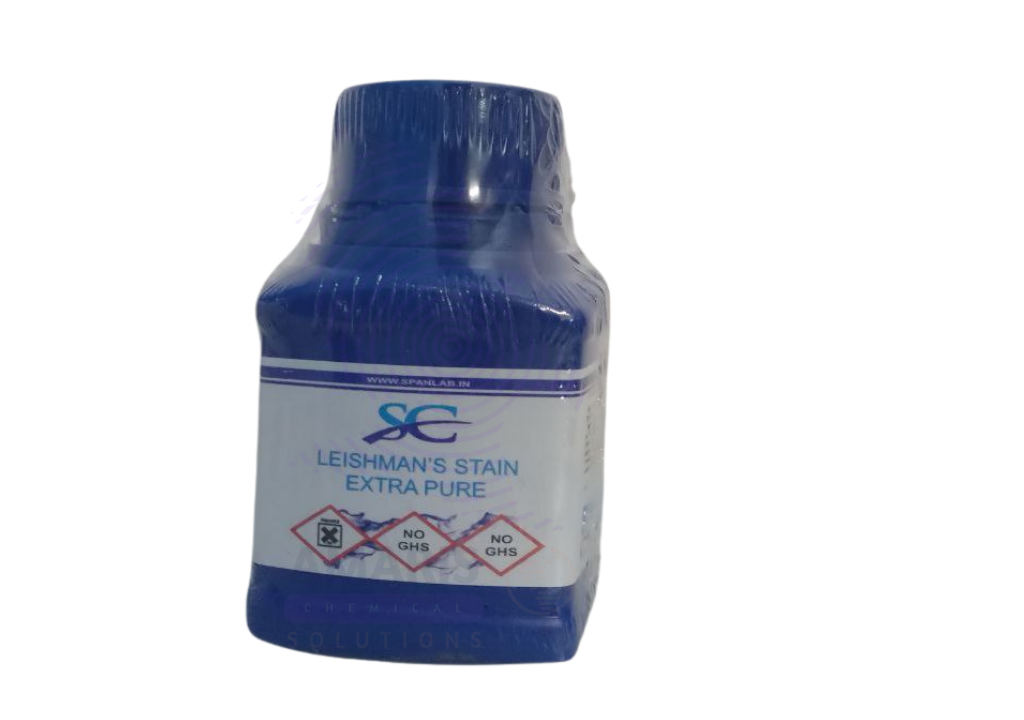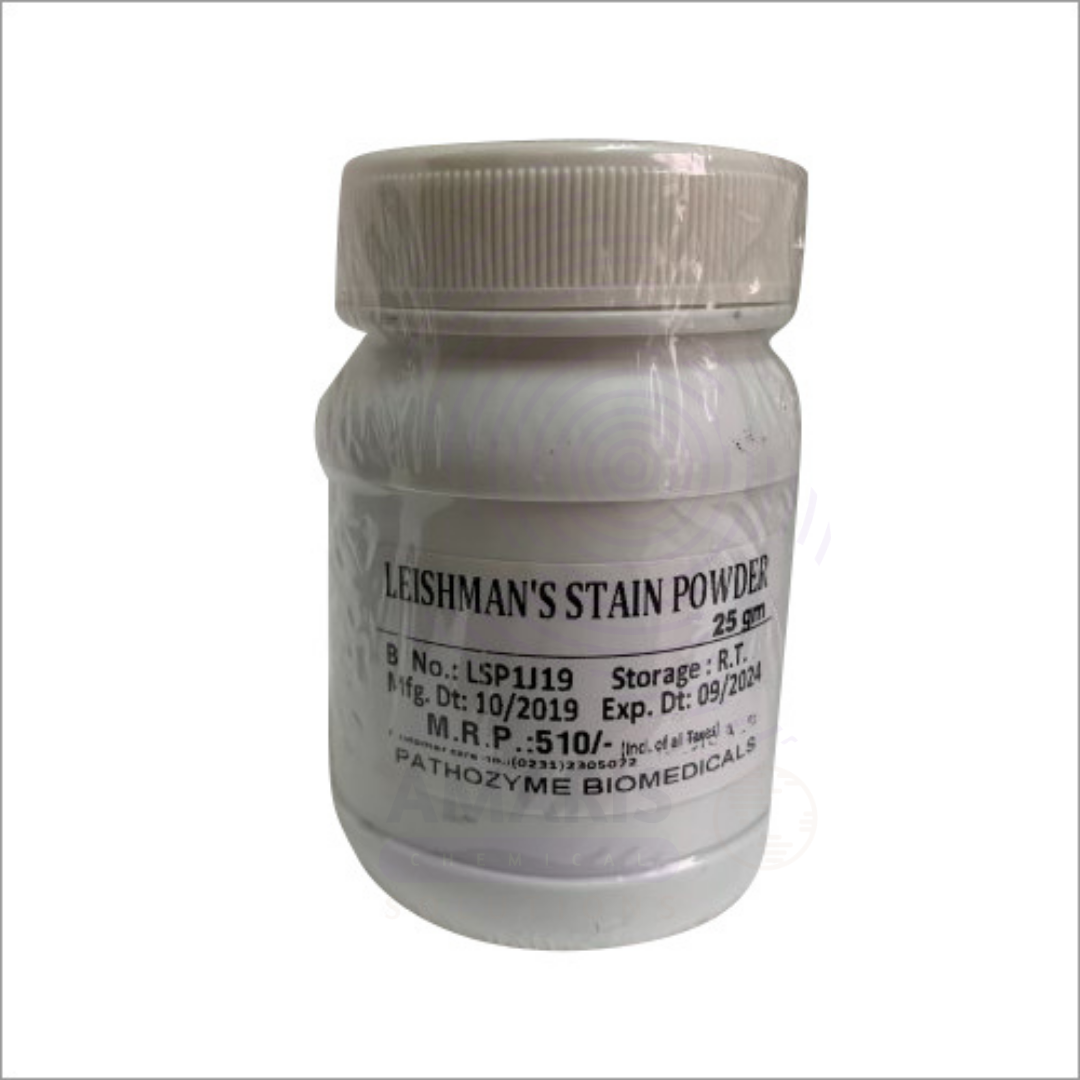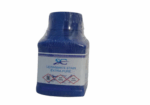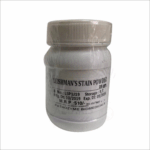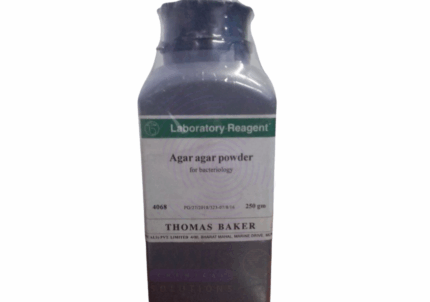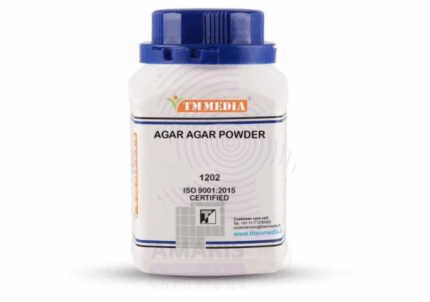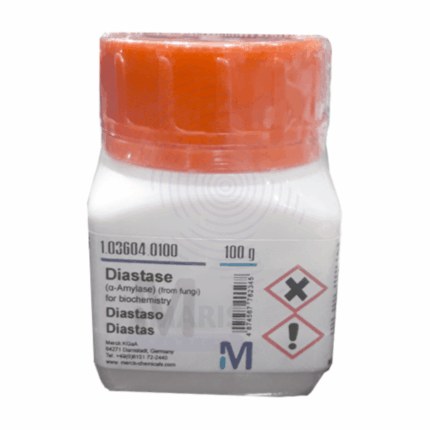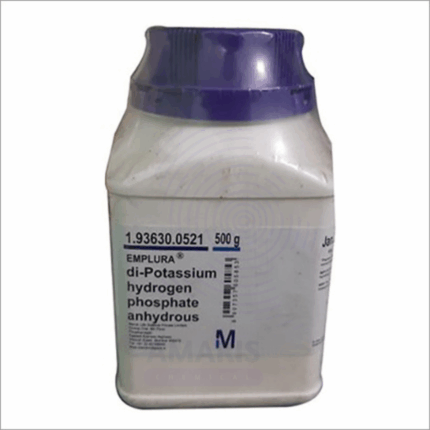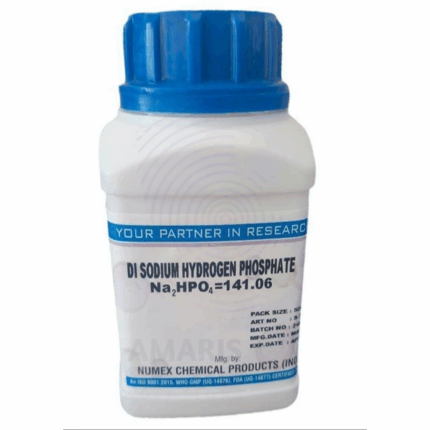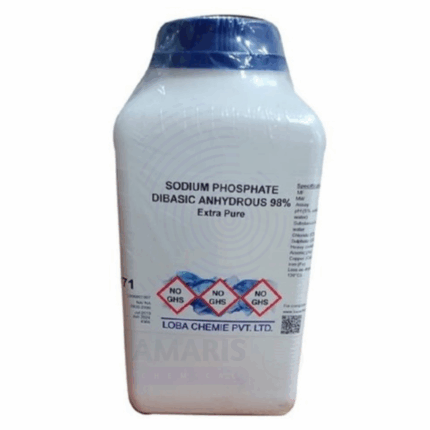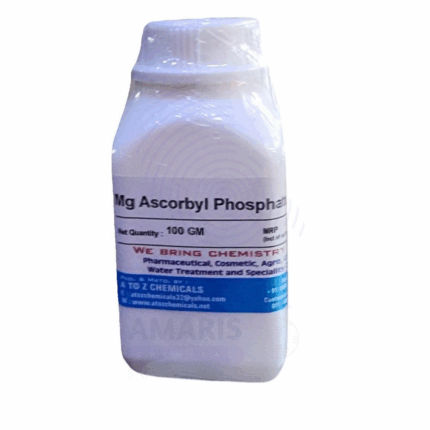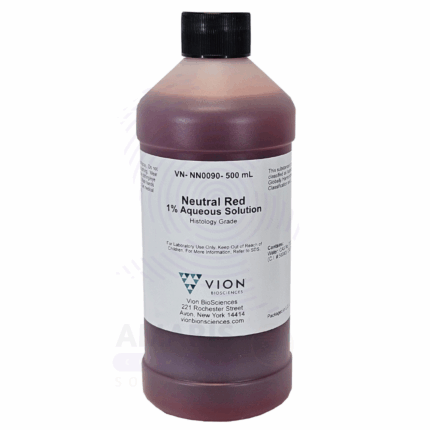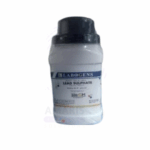
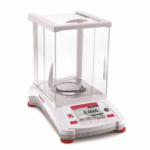
Leishman Stainpowder Extra Pure
$ 16.15
Leishman Stainpowder Extra Pure is a high-quality, finely milled formulation used extensively in hematology and parasitology for the microscopic staining of blood smears. Comprising mainly methylene blue and eosin, this stain is essential for differentiating white and red blood cells, as well as detecting malarial parasites and other blood-borne pathogens. Its excellent staining clarity and consistency make it a staple in clinical laboratories, diagnostic centers, and research institutions. The powder is reconstituted in methanol before use and must be handled with care, avoiding inhalation or contact with skin and eyes. Proper storage in a dry, cool environment ensures long-term stability and performance.
Leishman Stainpowder Extra Pure
Primary Uses
- Hematology (Blood Smear Staining):
- Primarily used for staining blood smears to differentiate blood cell types, especially for observing white blood cells, red blood cells, and platelets under a microscope.
- Parasitology (Malaria Diagnosis):
- Extensively used for diagnosing malaria by staining Plasmodium parasites within red blood cells.
- Cytological Staining:
- Applied in cytological preparations to identify and study nuclear and cytoplasmic morphology of cells.
Secondary Uses
- Veterinary Diagnostics:
- Utilized in veterinary labs for hematological and parasitic studies in animal blood samples.
- Training and Education:
- Frequently used in medical, clinical, and microbiology education for demonstrating cell morphology and staining techniques.
- Quality Control Testing:
- In clinical laboratories, used to verify staining protocols and standardize microscopy diagnostics across batches.
| PACK SIZE |
25 grams Plastic Tin |
|---|
1. Basic Identification Attributes
- Chemical Name: Leishman Stain Powder
- Synonyms: Leishman's Stain, Leishman Powder
- Composition: A dry mixture primarily of Methylene Blue and Eosin, often in methanol-soluble form
- Appearance: Dark violet to bluish-purple powder
- Solubility: Soluble in methanol or ethanol
- Grade: Extra Pure (suitable for laboratory diagnostics and microscopy)
2. Safety & Hazard Attributes
- GHS Classification:
- Acute toxicity – Category 4 (oral, inhalation)
- Eye irritation – Category 2A
- Carcinogenicity – Category 2 (due to methylene blue content)
- Hazard Statements:
- H302: Harmful if swallowed
- H315: Causes skin irritation
- H319: Causes serious eye irritation
- H351: Suspected of causing cancer
- Precautionary Statements:
- P261: Avoid breathing dust
- P280: Wear protective gloves, clothing, eye and face protection
- P301+P312: If swallowed, call a poison center or doctor
- P305+P351+P338: If in eyes, rinse cautiously with water
- Personal Protective Equipment (PPE):
- Lab coat, gloves, safety goggles
- Dust mask or fume hood if handling in powder form
- First Aid Measures:
- Inhalation: Move to fresh air, seek medical attention
- Skin Contact: Wash thoroughly with soap and water
- Eye Contact: Rinse with water for at least 15 minutes
- Ingestion: Rinse mouth; seek immediate medical advice
- Fire Hazards:
- Not flammable, but combustible
- Emits toxic fumes under fire (carbon oxides, nitrogen oxides)
- Use dry chemical, CO₂, or alcohol-resistant foam to extinguish
3. Storage & Handling Attributes
- Storage Conditions:
- Keep tightly closed in a cool, dry place
- Protect from light and moisture
- Store away from incompatible chemicals (oxidizers)
- Handling Tips:
- Minimize dust generation
- Avoid contact with eyes, skin, and clothing
- Handle in well-ventilated areas
4. Laboratory Applications
- Primary Uses:
- Hematology: Widely used for staining blood smears to identify blood parasites (e.g., Plasmodium in malaria) and differential white blood cell counts
- Microscopy: Staining nuclei and cytoplasm of blood cells for enhanced contrast under light microscopy
- Secondary Uses:
- Teaching labs for demonstrating blood smear techniques
- Veterinary diagnostics
- Staining bone marrow and other tissue smears for cellular differentiation
SAFETY PRECAUTIONS
Personal Protective Equipment (PPE):
- Wear a lab coat, nitrile gloves, and protective goggles.
- Use a dust mask or work in a fume hood to avoid inhalation of fine powders or fumes.
Handling:
- Handle with care to avoid inhalation, skin contact, or eye exposure.
- Avoid formation of dust and prevent spills.
- Wash hands thoroughly after use.
Storage:
- Store in a cool, dry, and well-ventilated area.
- Keep the container tightly closed and away from direct light.
- Do not store near oxidizing agents or acids.
FIRST AID MEASURES
Inhalation:
- Move the person to fresh air immediately.
- Seek medical attention if symptoms such as coughing or dizziness occur.
Skin Contact:
- Rinse affected areas with plenty of water and soap.
- Remove contaminated clothing.
- Get medical help if irritation or discoloration persists.
Eye Contact:
- Rinse cautiously with clean water for 15 minutes.
- Remove contact lenses if easy to do.
- Seek medical attention immediately.
Ingestion:
- Do not induce vomiting.
- Rinse mouth with water.
- Get urgent medical attention.
FIRE FIGHTING MEASURES
Flammability:
- May be combustible at high temperatures. Avoid creating dust clouds near ignition sources.
Extinguishing Media:
- Use dry chemical, carbon dioxide (CO₂), or alcohol-resistant foam.
- Water spray may be used to cool containers but might spread powdered material.
Hazardous Combustion Products:
- May emit carbon oxides, nitrogen oxides, and other toxic fumes when burned.
Firefighter Protection:
- Wear self-contained breathing apparatus (SCBA) and full fire-resistant protective gear.
- Avoid inhalation of combustion products.


 Preservatives(food)
Preservatives(food) Flavor Enhancers
Flavor Enhancers Acidulants
Acidulants Sweeteners
Sweeteners Antioxidants
Antioxidants Colorants(food)
Colorants(food) Nutraceutical Ingredients (food)
Nutraceutical Ingredients (food) Nutrient Supplements
Nutrient Supplements Emulsifiers
Emulsifiers
 Collectors
Collectors Dust Suppressants
Dust Suppressants Explosives and Blasting Agents
Explosives and Blasting Agents Flocculants and Coagulants
Flocculants and Coagulants Frothers
Frothers Leaching Agents
Leaching Agents pH Modifiers
pH Modifiers Precious Metal Extraction Agents
Precious Metal Extraction Agents
 Antioxidants(plastic)
Antioxidants(plastic) Colorants (Pigments, Dyes)
Colorants (Pigments, Dyes) Fillers and Reinforcements
Fillers and Reinforcements Flame Retardants
Flame Retardants Monomers
Monomers Plasticizers
Plasticizers Polymerization Initiators
Polymerization Initiators Stabilizers (UV, Heat)
Stabilizers (UV, Heat)
 Antifoaming Agents
Antifoaming Agents Chelating Agents
Chelating Agents Coagulants and Flocculants
Coagulants and Flocculants Corrosion Inhibitors
Corrosion Inhibitors Disinfectants and Biocides
Disinfectants and Biocides Oxidizing Agents
Oxidizing Agents pH Adjusters
pH Adjusters Scale Inhibitors( water)
Scale Inhibitors( water)
 Antioxidants(cosmetic)
Antioxidants(cosmetic) Emollients
Emollients Fragrances and Essential Oils
Fragrances and Essential Oils Humectants
Humectants Preservatives
Preservatives Surfactants(cosmetic)
Surfactants(cosmetic) Thickeners
Thickeners UV Filters
UV Filters
 Fertilizers
Fertilizers Soil Conditioners
Soil Conditioners Plant Growth Regulators
Plant Growth Regulators Animal Feed Additives
Animal Feed Additives Biostimulants
Biostimulants Pesticides (Herbicides, Insecticides, Fungicides)
Pesticides (Herbicides, Insecticides, Fungicides)
 Active Pharmaceutical Ingredients (APIs)
Active Pharmaceutical Ingredients (APIs) Excipients
Excipients Solvents(pharmaceutical)
Solvents(pharmaceutical) Antibiotics
Antibiotics Antiseptics and Disinfectants
Antiseptics and Disinfectants Vaccine Adjuvants
Vaccine Adjuvants Nutraceutical Ingredients (pharmaceutical)
Nutraceutical Ingredients (pharmaceutical) Analgesics & Antipyretics
Analgesics & Antipyretics
 Analytical Reagents
Analytical Reagents Solvents(lab)
Solvents(lab) Chromatography Chemicals
Chromatography Chemicals Spectroscopy Reagents
Spectroscopy Reagents microbiology-and-cell-culture-reagents
microbiology-and-cell-culture-reagents Molecular Biology Reagents
Molecular Biology Reagents Biochemical Reagents
Biochemical Reagents Inorganic and Organic Standards
Inorganic and Organic Standards Laboratory Safety Chemicals
Laboratory Safety Chemicals Specialty Laboratory Chemicals(Special Laboratory Equipment)
Specialty Laboratory Chemicals(Special Laboratory Equipment)
 Demulsifiers
Demulsifiers Hydraulic Fracturing Fluids
Hydraulic Fracturing Fluids Scale Inhibitors(oil)
Scale Inhibitors(oil) Surfactants(oil)
Surfactants(oil) Drilling Fluids
Drilling Fluids
 Dyes and Pigments
Dyes and Pigments Bleaching Agents
Bleaching Agents Softening Agents
Softening Agents Finishing Agents
Finishing Agents Antistatic Agents
Antistatic Agents
 Admixtures
Admixtures Waterproofing Agents
Waterproofing Agents Sealants and Adhesives
Sealants and Adhesives Curing Compounds
Curing Compounds Concrete Repair Chemicals
Concrete Repair Chemicals Anti-Corrosion Coatings
Anti-Corrosion Coatings
 Surfactants(cleaning)
Surfactants(cleaning) Builders
Builders Enzymes
Enzymes Solvents (Cleaning)
Solvents (Cleaning) Fragrances
Fragrances
 Electronic Chemicals
Electronic Chemicals Catalysts
Catalysts Lubricants
Lubricants Photographic Chemicals
Photographic Chemicals Refrigerants
Refrigerants Automotive chemicals
Automotive chemicals Pyrotechnic Chemicals
Pyrotechnic Chemicals
 Biodegradable Surfactants
Biodegradable Surfactants Bio-based Solvents
Bio-based Solvents Renewable Polymers
Renewable Polymers Carbon Capture Chemicals
Carbon Capture Chemicals Wastewater Treatment Chemicals
Wastewater Treatment Chemicals
 Pigments
Pigments Solvents(paint)
Solvents(paint) Specialty Coatings
Specialty Coatings Binders/Resins
Binders/Resins Additives
Additives Driers
Driers Anti-Corrosion Agents
Anti-Corrosion Agents Functional Coatings
Functional Coatings Application-Specific Coatings
Application-Specific Coatings
 Fresh Herbs
Fresh Herbs Ground Spices
Ground Spices Whole Spices
Whole Spices Spice Blends
Spice Blends Dried Herbs
Dried Herbs
 Leavening Agents
Leavening Agents Dough Conditioners
Dough Conditioners Flour Treatments
Flour Treatments Fat Replacers
Fat Replacers Decoratives
Decoratives Preservatives(baking)
Preservatives(baking)
 Plasticizers & Softeners
Plasticizers & Softeners Reinforcing Agents
Reinforcing Agents Adhesion Promoters
Adhesion Promoters Vulcanizing Agents
Vulcanizing Agents Antidegradants
Antidegradants Blowing Agents
Blowing Agents Fillers & Extenders
Fillers & Extenders Accelerators & Retarders
Accelerators & Retarders